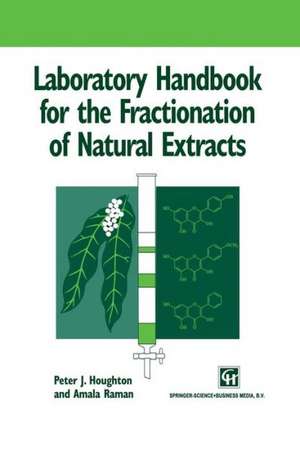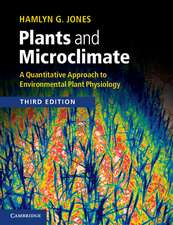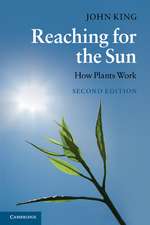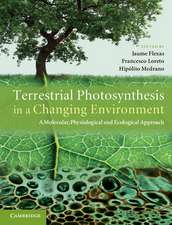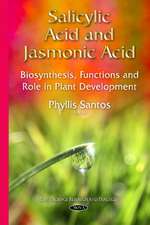Laboratory Handbook for the Fractionation of Natural Extracts
Autor Peter Houghton, Amala Ramanen Limba Engleză Paperback – 2 noi 2012
A reference for research scientists involved in the extraction, fractionation and isolation of compounds from natural materials, especially those working with plants. This book features practical exercises to illustrate the techniques described in every chapter.
| Toate formatele și edițiile | Preț | Express |
|---|---|---|
| Paperback (1) | 935.00 lei 6-8 săpt. | |
| Springer Us – 2 noi 2012 | 935.00 lei 6-8 săpt. | |
| Hardback (1) | 943.25 lei 6-8 săpt. | |
| Springer Us – 31 mar 1998 | 943.25 lei 6-8 săpt. |
Preț: 935.00 lei
Preț vechi: 1140.25 lei
-18% Nou
Puncte Express: 1403
Preț estimativ în valută:
178.91€ • 187.33$ • 148.40£
178.91€ • 187.33$ • 148.40£
Carte tipărită la comandă
Livrare economică 09-23 aprilie
Preluare comenzi: 021 569.72.76
Specificații
ISBN-13: 9781461376620
ISBN-10: 1461376629
Pagini: 208
Ilustrații: VI, 199 p.
Dimensiuni: 155 x 235 x 11 mm
Greutate: 0.3 kg
Ediția:Softcover reprint of the original 1st ed. 1998
Editura: Springer Us
Colecția Springer
Locul publicării:New York, NY, United States
ISBN-10: 1461376629
Pagini: 208
Ilustrații: VI, 199 p.
Dimensiuni: 155 x 235 x 11 mm
Greutate: 0.3 kg
Ediția:Softcover reprint of the original 1st ed. 1998
Editura: Springer Us
Colecția Springer
Locul publicării:New York, NY, United States
Public țintă
ResearchCuprins
1 Introduction.- 1.1 The need for this book — an active extract, what happens next?.- 1.2 Why is it important to find out the nature of the active components?.- 1.3 Green chemicals — the renewed interest in natural products as sources of bioactive compounds.- 1.4 What are we doing?.- 1.5 Bibliography.- 2 Important concepts.- 2.1 Introduction.- Polarity.- 2.3 Dilution and concentration factors.- 2.4 Synergy.- 2.5 Deterioration, decomposition and storage.- 2.6 Biological variation.- 2.7 Authentication of material.- 2.8 Dereplication.- 3 Methods for extraction and sample clean-up.- 3.1 Introduction.- 3.2 Factors to be considered in selecting an extraction method.- 3.3 General extraction methods.- 3.4 Extraction methods for specific phytochemical groups.- 3.5 Clean-up techniques to remove unwanted substances.- 3.6 Bibliography.- 4 Crude fractionation procedures.- 4.1 Introduction.- 4.2 Choice of fractionation method.- 4.3 Common fractionation methods.- 4.4 Bibliography.- 5 Chromatographic fractionation procedures.- 5.1 Introduction.- 5.2 The principles of chromatography.- 5.3 Physico-chemical processes taking place in chromatography.- 5.4 Bibliography.- 6 Chromatographic procedures using columns and liquid-liquid systems.- 6.1 Column chromatography.- 6.2 Liquid-liquid partition schemes.- 6.3 Bibliography.- 7 Layer chromatography.- 7.1 Layer chromatography.- 7.2 Preparative thin-layer chromatography and paper chromatography.- 7.3 Bibliography.- 8 Analysis of crude extracts, fractions and isolated compounds.- 8.1 Introduction.- 8.2 Qualitative analysis of mixtures and isolates.- 8.3 Quantitative analytical methods.- 8.4 Biological assays.- 8.5 Bibliography.- 9 General methods.- 9.1 Basic techniques in handling extracts.- 9.2 Isolation of active compounds.- 9.3Chromatographic procedures.- 9.4 Basic techniques in thin-layer chromatography.- 9.5 Bibliography.- 10 Practical exercises in chemical screening and fractionation of crude extracts from plant materials.- 10.1 Chemical screening.- 10.2 Exercises in extraction, clean-up, fractionation and Chromatographicmethods.- Appendix A Recipes for chemical test reagents.
